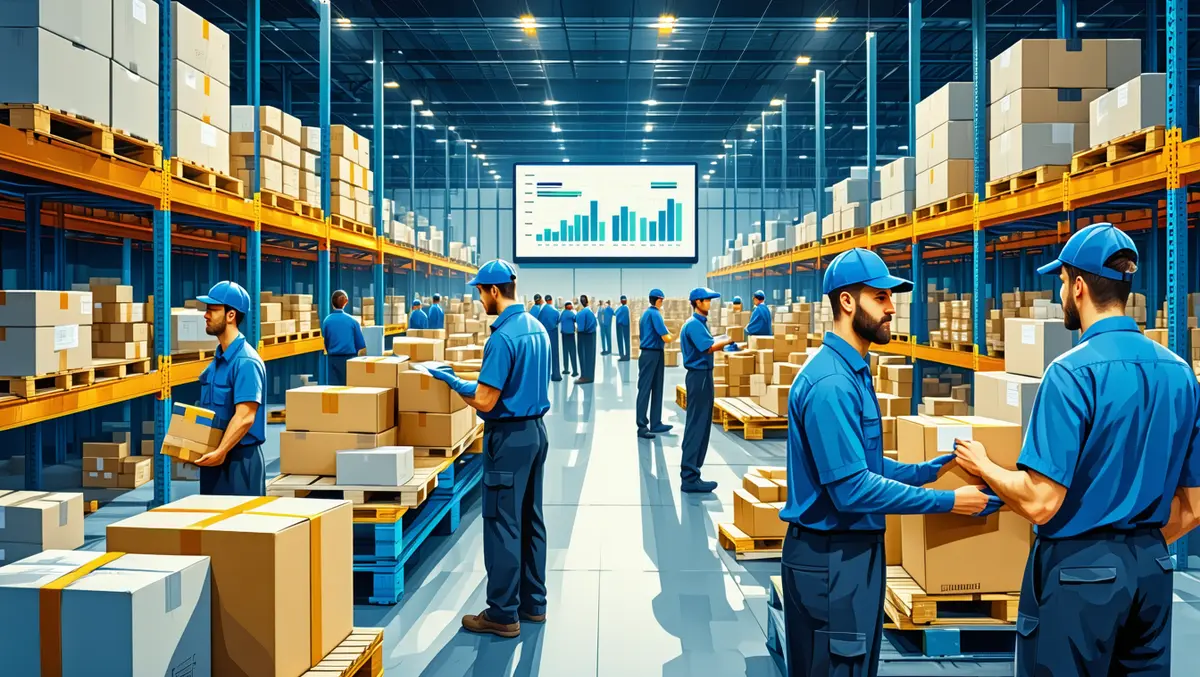
The rise of returns: making reverse logistics work for your business
The concept of reverse logistics continues to gain significant importance in eCommerce. With consumers expecting seamless return experiences, businesses must adapt their operations to handle returns efficiently and cost-effectively. For retailers and logistics providers alike, this shift represents both a challenge and an opportunity to refine processes and create long-term value.
Why reverse logistics matters
The rise of online shopping has brought a significant shift in customer expectations. In industries like fashion, return rates can reach as high as 30%, putting strain on retail supply chains and adding to the cost of business.
While managing returns can be challenging, they represent a crucial opportunity to build customer satisfaction and foster loyalty. A well-planned reverse logistics strategy mitigates costs and strengthens the trust customers place in a brand by providing a smooth return process.
As businesses contend with the demands of reverse logistics, investing in tools and systems to enhance visibility, streamline workflows, and optimise the customer experience has become essential. At the same time, reverse logistics plays an increasingly important role in advancing sustainable business practices. Consumers today prioritise environmentally conscious brands, compelling businesses to examine the ecological footprint of their return processes. Businesses can align their logistics strategies with broader sustainability goals by refining workflows, reducing waste, and embracing initiatives such as refurbishing and reselling returned goods.
Streamlining with labels
Labels are indispensable in ensuring efficient logistics operations, particularly for reverse logistics. From shipping labels to racking and return labels, having the correct label for every process step guarantees smooth handling and traceability.
Shipping labels are essential for quickly and accurately identifying packages and reducing errors during returns processing. These labels ensure that items reach their designated destinations within the warehouse or distribution centre without delays. Racking labels, designed for precise and durable visibility, help warehouse teams systematically store returned goods, facilitating easy retrieval and restocking. Return labels—whether pre-printed or digitally generated—simplify the return process for customers and ensure compatibility with backend systems, expediting workflows.
For example, Peacock Bros.' durable thermal transfer labels are designed to withstand challenging conditions such as fluctuating warehouse temperatures or prolonged storage. These labels are highly durable and customisable, making them suitable for various applications, including shipping and returns. By integrating these labels into their operations, businesses can achieve heightened efficiency and accuracy in reverse logistics.
Labels do more than ensure items are correctly identified and routed; they also enhance traceability across the supply chain. For example, in a high-volume eCommerce warehouse, pre-printed return labels provided at the point of purchase can seamlessly integrate with inventory management systems, streamlining the returns process and reducing customer wait times. This level of detail allows businesses to track each package's journey precisely, ensuring transparency and reliability for customers and stakeholders alike.
Enhancing returns with scanning equipment
Accurate data capture is essential in reverse logistics. Scanning equipment and mobile computers allow businesses to track and process returns efficiently, minimising bottlenecks and improving operational workflows.
Advanced scanning technology enables warehouse teams to validate returned items against original purchase records, identify defects or damages, and sort products for restocking, refurbishment, or recycling. Mobile computers with real-time connectivity ensure that employees can access and update inventory data on the go, seamlessly integrating returned goods into the supply chain.
Connectivity as a foundation
Connectivity solutions, such as 4G and 5G, revolutionise how businesses manage reverse logistics. With reliable wireless connections, devices like desktops and industrial and mobile printers can operate efficiently anywhere, enabling real-time updates and faster processing.
For example, printers connected via 4G/5G networks allow warehouse staff to print return labels directly at the point of inspection, reducing delays and enhancing accuracy. This kind of connectivity is especially valuable for businesses operating across multiple sites or handling high volumes of returns.
Automating with Cloud IMS
Inventory Management Systems (IMS) are at the core of efficient warehouse and supply chain operations, automating inventory management and streamlining workflows. These systems integrate seamlessly with barcode scanners, mobile computers, wireless LANs, and radio frequency identification technology (RFID technology), enabling accurate, real-time tracking of products as they move through warehouses or distribution centres.
IMS supports key functions such as inventory collection, storage processes, manual and automated picking, and tracking items for shipment. Every stock item received, picked, packed, and shipped is recorded and tracked, ensuring complete visibility and control. Additionally, IMS optimises warehouse floor space by facilitating automated replenishment based on inventory methods, such as last in, first out (LIFO) and first in, first out (FIFO). With the ability to manage operations across multiple locations, IMS centralises inventory data and enhances decision-making.
By integrating real-time data from barcoding, batch numbers, serial numbers, and RFID tagging, IMS enables businesses to maintain a consistent flow of information. It also simplifies consignment management by generating manifests compatible with carriers like Australia Post, Direct Freight, and StarTrack.
Building Better Reverse Logistics
Adapting to reverse logistics challenges requires thoughtful strategies and the right tools. By implementing robust labelling systems, leveraging advanced scanning equipment, embracing reliable connectivity, and automating with cloud-based solutions, businesses can turn the complexities of returns into opportunities for growth.
Today, reverse logistics is vital to customer satisfaction, brand loyalty, and operational efficiency. Businesses investing in innovative returns management approaches are better positioned to meet evolving consumer expectations and build resilient, sustainable supply chains.

